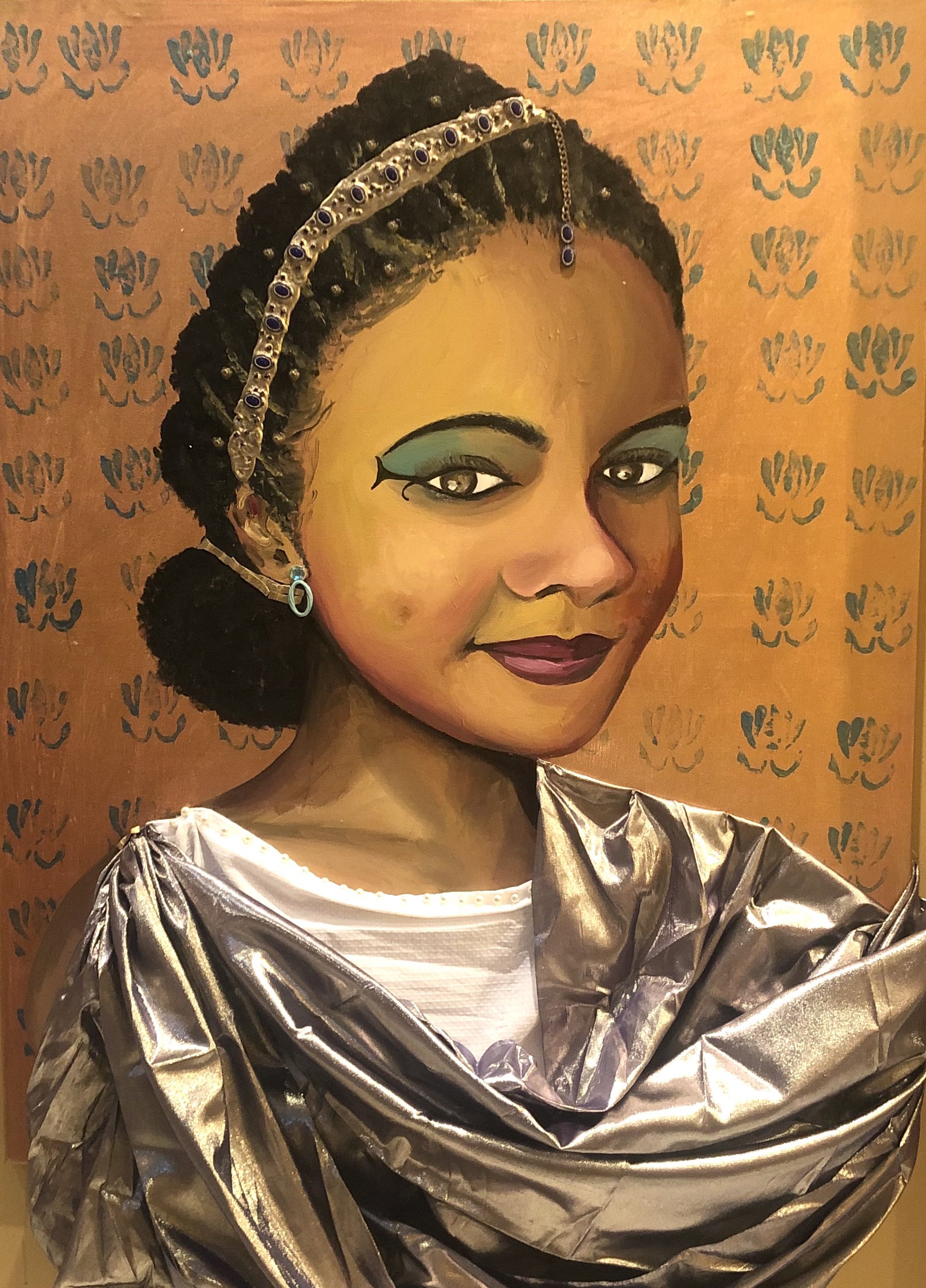Decolonizing History
My focus with these paintings is great women from Eastern history reimagined, free from the shackles of perceived exoticism, mystification, violence and eroticism usually reserved for Western representations of Eastern women within what Edward Said calls “the corporate institution for dealing with the Orient”.
The practice of vilifying political enemies by making their pursuits evil and villainous and one’s own warring activities legitimate and worthy is an age old tactic. Whoever writes history owns the narrative. Whoever owns the narrative assigns the labels. With this portrait series, I aim to take back this narrative and reinvent it in my own visual language; maybe it will show an alternative image and balance out the “Orientalist” one that survives in western art today.
-

Cleopatra 100cm x 80cm
This DECOLONIZING HISTORY portrait is queen Cleopatra, the last Egyptian pharaoh; still as misrepresented as during her life due to a smear campaign by Octavius during war with Marc Anthony and Cleopatra over control of the Roman Empire. This narrative of the seductress who bewitched Roman men and shocked Roman women is typical political rhetoric, reducing the “Other” to exotic evil destroying legitimate rule.
My focus with this work is Cleopatra reimagined, free from the shackles of perceived exoticism, mystification, violence and eroticism usually reserved for Western representations of Eastern women within what Edward Said calls “the corporate institution for dealing with the Orient”.
-

Al Hurra 110cm x 65cm
Assayida Al Hurra ( السيدة الحرة), known in European history as “The Pirate Queen” was a Moroccan woman of Andalusian origin whose family fled to the North African coast after the Fall of Grenada in 1492. After her husband, the ruler of the city-state of Tetouan died, she assumed the role of governor and gained the title “Al Hurra” -the free- a title then reserved for a woman who wielded sovereign power. Throughout her reign, Assayida Al Hurra assembled a fleet to defend the western coast of the Mediterranean from Portuguese and Spanish ships.
Al Hurra became known as the “Pirate Queen” as news of her cargo seizing and ransomed kidnappings became notorious. There was never any record of her actually being in any ship or physically taking part in the attacks. In addition to protecting North African shores from invaders, Al Hurra enriched her city state and gained great respect as an undisputed leader for 27 years.
-

Zenobia 100cmx76cm
ZENOBIA- queen of Palmyra; an oasis in the Syrian desert between the Mediterranean and the Euphrates that was part of the Roman Empire in the first century.
Zenobia came to power in 267CE when her husband, governor of the Eastern Roman Empire who had crowned himself “King of Kings” after defeating the Persians, was assassinated. She ruled as regent to her son. Instability in Rome allowed Zenobia to continue Palmyra's expansion. She succeeded in 270CE to make unprecedented conquests. Emperor Aurelian saw a threat and defeated her, ending the reign of the first and last queen of Palmyra.
What survives of her image is the mystical queen brought to her knees by Roman might. In European paintings, Zenobia is represented disgraced and dragged in gold chains in Aurelius’ victory parade. Antiquity’s depictions of Eastern women leaders start what colonial orientalism later continues: they switch the emphasis from the astuteness and political and military prowess of female heroes to paint them as exotic, mysterious, over-sensualized for the aim of belittling their achievements and controlling their narrative.